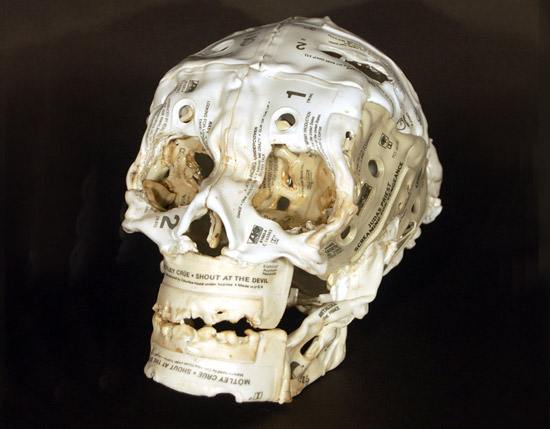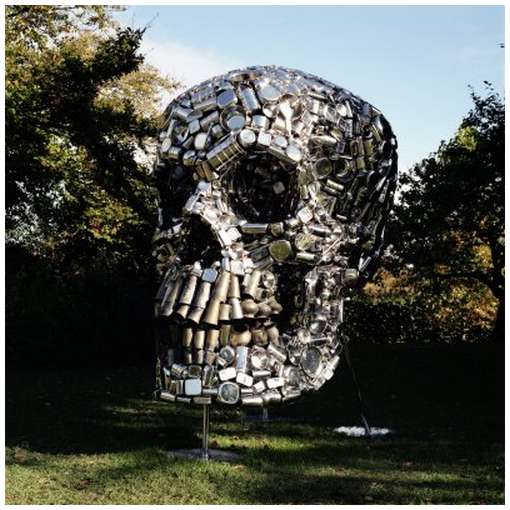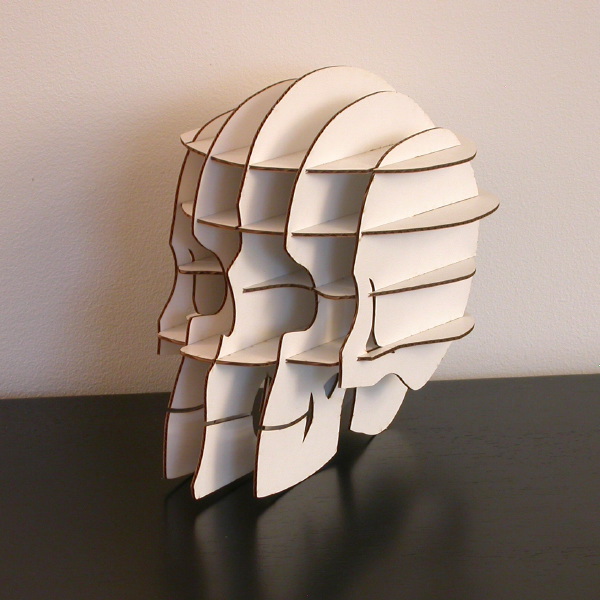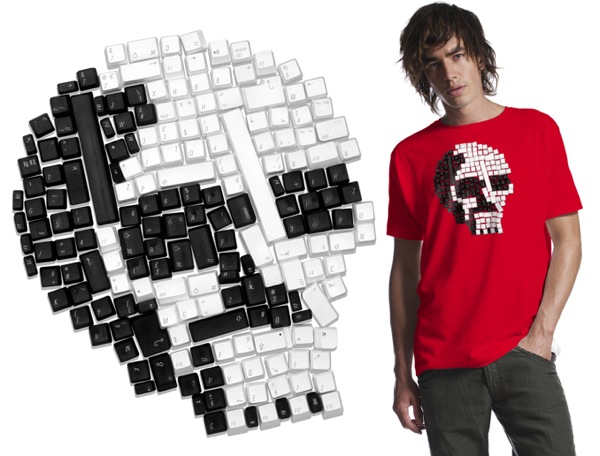It’s difficult to explain the iconographic appeal of skulls. On the one hand, the skull is an emblem of rebellion and a brand of counterculture; on the other, it is ubiquitous — its recurring appearance in art, fashion and advertising making it part of the mainstream. Who knows why skulls, totemic of death, should continue to inspire artists and rouse consumers, but inspire and rouse they do. We like the following skulls because, though associated with the expired, they are formed by breathing new life into objects otherwise defunct.
Skateboard Skull

Cassette Tape Skull

Kitchen Utensils Skull

Recycled Cardboard Skull

Keyboard Skull
